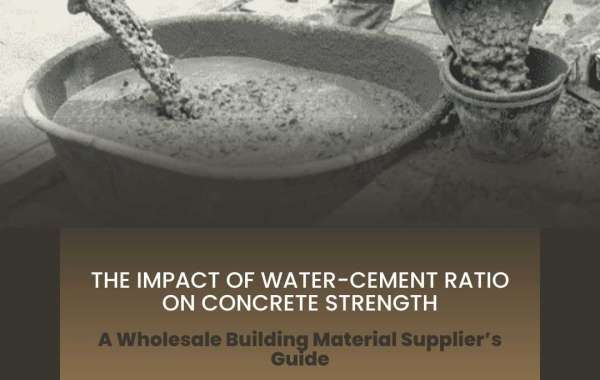When it comes to creating strong buildings, the water-cement ratio is an important component that determines the strength and durability of concrete. Understanding this ratio is essential for anyone involved in construction, from engineers to DIY enthusiasts. This guide from a wholesale building material supplier perspective sheds light on the importance of water-cement ratio, its impact on concrete strength, and the economic and local business benefits of getting it right.
Understanding the Water-Cement Ratio
What is the Water-Cement Ratio?
The water-cement ratio is the weight of water divided by the weight of cement used in a concrete mixture. It determines the concrete's workability, strength, and durability. A lower water-cement ratio leads to higher concrete strength but less workability, while a higher ratio increases workability but decreases strength.
Why is it Important?
Getting the ratio of water to cement right is critical because it influences the chemical interaction between water and cement. This reaction, known as hydration, is what gives concrete its strength. Too much water dilutes the mixture, weakening the concrete, while too little water can make the mix unworkable and difficult to handle.
The Impact on Concrete Strength
Strength and Durability
A properly balanced water-cement ratio ensures that the concrete achieves its maximum potential strength. For structural applications, a low water-cement ratio is preferred as it leads to denser and more durable concrete. This is particularly important for load-bearing structures, foundations, and any construction that demands high strength and longevity.
Workability
On the flip side, the water-cement ratio also affects the workability of the concrete. Higher water content makes the mix easier to work with and pour, especially for intricate or detailed construction projects. However, this ease of use comes at the cost of reduced strength, which might not be suitable for all types of construction.
Economic and Local Business Benefits
Cost Efficiency
From an economic standpoint, optimising the water-cement ratio can lead to significant cost savings. Using the right amount of water and cement minimises waste and ensures that the concrete mix achieves the desired properties without the need for expensive additives or reinforcements. This efficiency is crucial for large-scale construction projects where material costs can add up quickly.
Supporting Local Businesses
Choosing to source your building materials from a local wholesale building material supplier has several benefits. It supports the local economy, reduces transportation costs, and ensures that you receive fresh, high-quality materials. Local suppliers like Dust Reta understand the specific needs and conditions of their region, providing tailored advice and products that enhance construction quality and efficiency.
Practical Tips for Contractors
Testing and Adjustments
Contractors should regularly test their concrete mixes to determine the optimal water-cement ratio for their specific projects. Adjustments may be required based on the ambient circumstances, kind of building, and materials utilised.
Consistent Quality
Maintaining a consistent water-cement ratio across all batches of concrete ensures uniform strength and durability throughout the structure. This uniformity is critical for large-scale operations involving several batches of concrete.
Conclusion
The water-cement ratio is a fundamental aspect of concrete construction that significantly impacts the strength, durability, and workability of the mix. By understanding and optimising this ratio, builders can create stronger and more durable structures, reduce costs, and support local businesses. As a wholesale building material supplier, emphasising the importance of the water-cement ratio helps clients achieve better results in their construction projects. Remember, the key to robust and long-lasting concrete lies in the perfect balance of water and cement.








